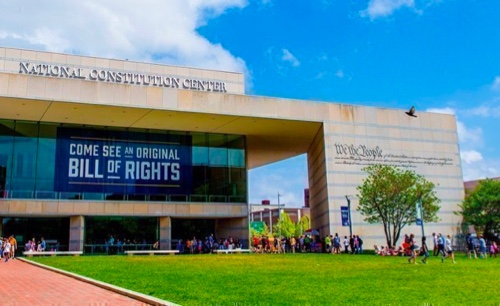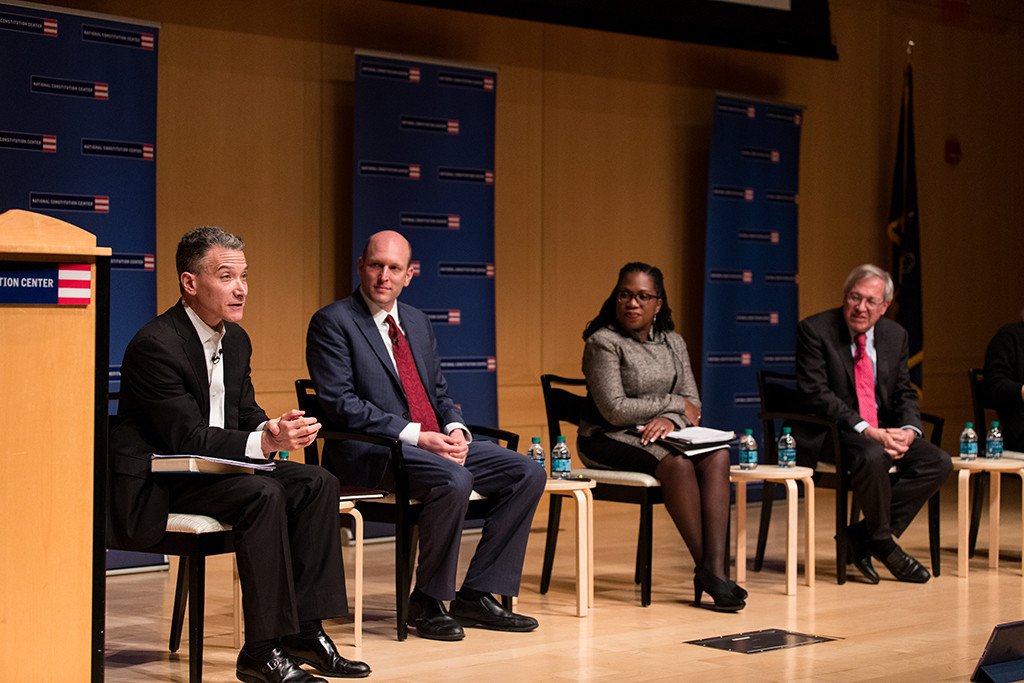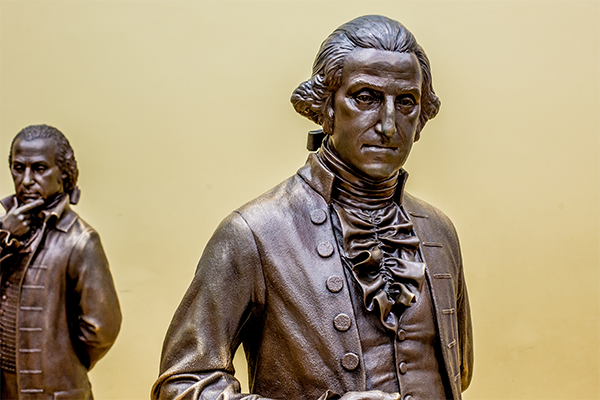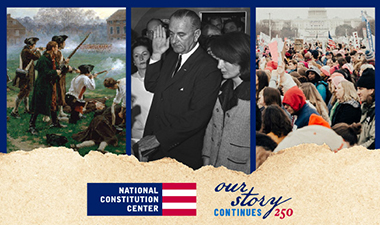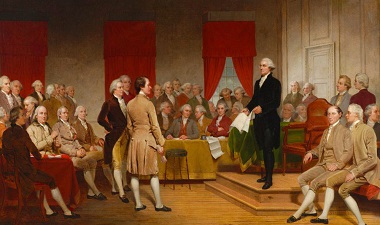In the case of Louisiana v. Callais, the Supreme Court on Wednesday could decide the fate of a key section of the Voting Rights Act, a centerpiece of the Civil Rights Movement.
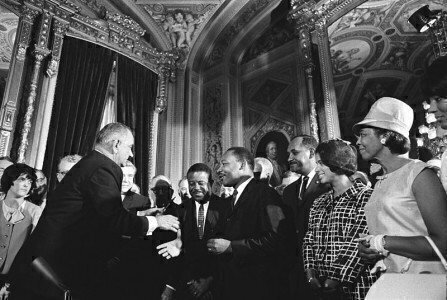 The court will hear arguments about the constitutionality of a Louisiana law that created a voting district where the majority of voters are Black, which was followed by a second similar district in state. The justices are considering if Louisiana’s intentional creation of the second majority-minority congressional district violates the 14th or 15th Amendments to the U.S. Constitution.
The court will hear arguments about the constitutionality of a Louisiana law that created a voting district where the majority of voters are Black, which was followed by a second similar district in state. The justices are considering if Louisiana’s intentional creation of the second majority-minority congressional district violates the 14th or 15th Amendments to the U.S. Constitution.
The case may also implicate the constitutionality of Section 2 of the Voting Rights Act, which prohibits the “denial or abridgement of the right of any citizen of the United States to vote” on account of race or color, including citizens who belong to a language minority group.
Link: A Detailed Explanation of Louisiana v. Callais
The Origins of the Voting Rights Act
On August 6, 1965, President Lyndon Johnson signed the Voting Rights Act into law, at a ceremony attended by Martin Luther King, Jr., Rosa Parks, civil rights leaders, and members of Congress. The act represented a long, difficult effort to advance equality since 1870.
The act’s origins were in the 15th Amendment’s ratification on Feb. 23, 1870. As part of what are considered the Reconstruction Amendments, its text reads, “The right of citizens of the United States to vote shall not be denied or abridged by the United States or by any State on account of race, color, or previous condition of servitude.” (The 13th Amendment dealt with the abolition of slavery, while the 14th Amendment wrote important protections for citizenship, freedom, and equality into the Constitution.)
However, a series of Supreme Court rulings limited the promises of the Reconstruction Amendments. The Slaughter-House Cases (1873) read the 14th Amendment’s Privileges or Immunities Clause narrowly; the Civil Rights Cases (1883) declared the Civil Rights Act of 1875 unconstitutional; and Plessy v. Ferguson (1896) permitted the separate but equal doctrine for publicly owned facilities.
By the 1940s, a series of court decisions and congressional acts started to wear down these tactics. A little over a decade earlier, the Supreme Court began to apply the Bill of Rights to the states in earnest, a process known as incorporation. As originally framed and ratified, the Bill of Rights only applied to the federal government. In April 1944, the Supreme Court in Smith v. Allwright invalidated the practice of holding “white” primary elections. In 1954, Brown v. Board of Education overturned Plessy and began to attack racial discrimination in a variety of context, beginning with public schools. The ratification of the 24th Amendment in early 1964 banned poll taxes in federal elections. And in 1966, Harper v. Virginia Bd. of Elections held that a state’s conditioning of the right to vote on the payment of a fee or tax violated the 14th Amendment.
On July 2, 1964, Congress enacted the Civil Rights Act of 1964, an important milestone in attack on Jim Crow. The act ended segregation in private businesses offering public accommodations, and it banned discriminatory practices in employment and segregation in public facilities. Under the act’s Title I, literacy tests for voting were also banned, as were unequal voting requirements. But it did not extend a full set of protections for voter discrimination.
Then, on March 7, 1965, civil rights activists were attacked by Alabama police near a bridge in Selma, Alabama, in a moment that shocked a nation and helped lead to enactment of the Voting Rights Act of 1965. President Lyndon Baines Johnson presented a draft of the Voting Rights Act to Congress on March 15, 1965.
In August 1965, President Johnson signed the Voting Rights Act into law with broad bipartisan support. The act contained language similar to the 15th Amendment. Its Section 2 prohibited placing race or color qualifications on voters while Sections 4 and 5 required preclearance by the U.S. Attorney General or a federal court for voting changes in jurisdictions with a history of voter discrimination.
In 1966, the Supreme Court upheld the VRA in South Carolina v. Katzenbach. “We here hold that the portions of the Voting Rights Act properly before us are a valid means for carrying out the commands of the Fifteenth Amendment,” said Chief Justice Earl Warren. “Hopefully, millions of non-white Americans will now be able to participate for the first time on an equal basis in the government under which they live.”
The Voting Rights Act in Modern Times
The act has been renewed several times by Congress, beginning in 1970. According to the Congressional Research Service, three common themes persisted as the act was amended: Congressional majorities in Congress wanted the VRA's temporary provisions extended; the legislative record showed dramatic increases in minority political participation; and some members consistently argued that the law unfairly targeted states in the South. However, the most recent amendments to the VRA in 2006 passed by wide margins in Congress.
A unanimous Supreme Court did rule in a significant case, Thornburg v. Gingles (1986) that a North Carolina General Assembly redistricting plan violated Section 2 of the VRA by diluting the impact of Black voters in five of the state’s six electoral districts.
In 2006, Congress reauthorized the act’s Section 4 and 5 preclearance language until the year 2031 using participation data from 1972. However, the 2013 Supreme Court decision of Shelby County v. Holder eliminated a critical part of the act’s preclearance formula for regions, saying it didn’t relate to current conditions in areas where discrimination was once rampant.
“Our decision in no way affects the permanent, nationwide ban on racial discrimination in voting found in Section 2,” wrote Chief Justice John Roberts. “We issue no holding on Section 5 itself, only on the coverage formula. Congress may draft another formula based on current conditions.”
In a dissent, Justice Ruth Bader Ginsburg believed that the “determination of the body empowered to enforce the Civil War Amendments ‘by appropriate legislation’ merits this Court’s utmost respect. In my judgment, the Court errs egregiously by overriding Congress’ decision.”
In Brnovich v. Democratic National Committee (2021), the Supreme Court considered a question related to Section 2 of the VRA. In Arizona, a law passed in 2016 made it illegal for someone to collect and deliver of another person’s mail-in ballot. It also had a policy for physically designated in-person voting at precincts. The Democratic National Committee sued the state, claiming the law and policy were discriminatory under Section 2 of the VRA against Native American, Hispanic, and African American voters.
In a 6-3 decision, Justice Samuel Alito said Arizona had the right to establish time, place, and manner requirements for voting, and its voting policies were “not enacted with a racially discriminatory purpose.” In her dissent, Justice Elena Kagan stated that “the language of Section 2 is as broad as broad can be. It applies to any policy that ‘results in’ disparate voting opportunities for minority citizens.” She believed, “this Court has no right to remake Section 2. … But Congress gets to make that call.”
Court observers believe the case of Louisiana v. Callais may redefine some of the Court’s precedents or Section 2 of the VRA. A sign of the case’s importance is the Court considered Louisiana v. Callais in its previous term without reaching a decision. It ordered the case re-argued in the current term, over the objections of Justice Clarence Thomas.
Scott Bomboy is the editor in chief of the National Constitution Center.
